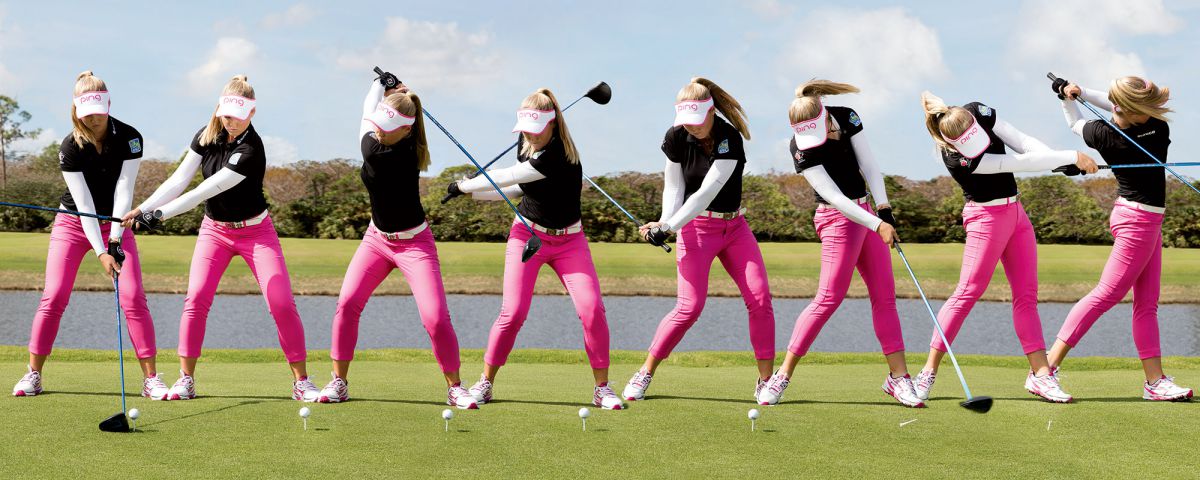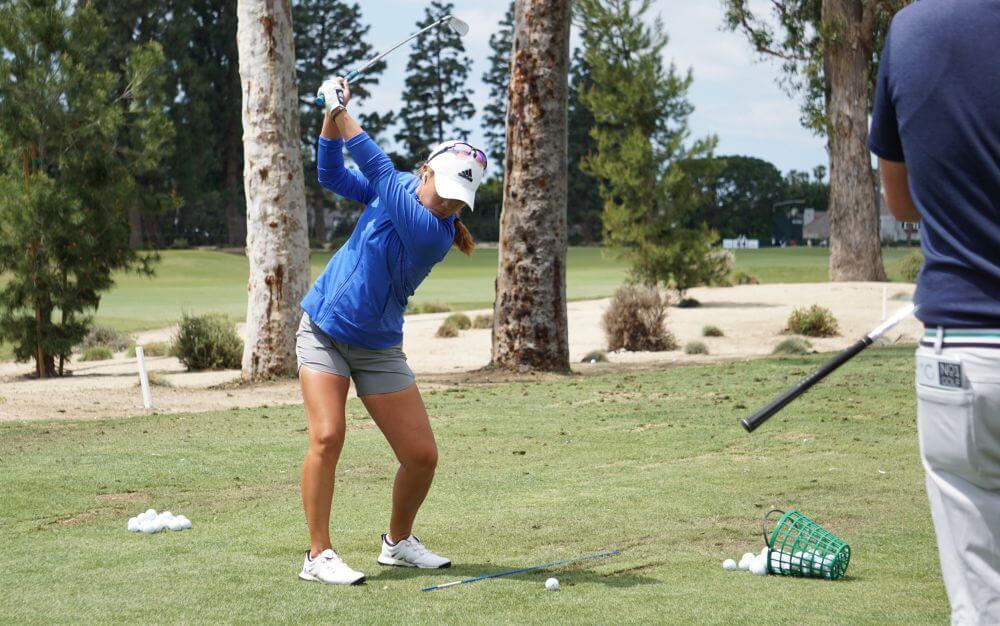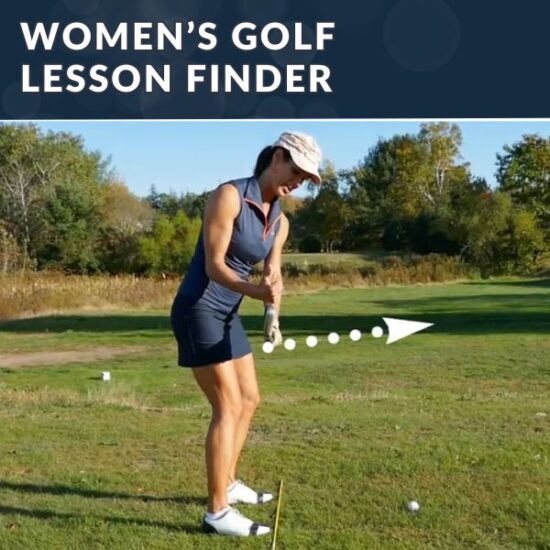The backswing can really differ from player to player. However, it is interesting that we cannot detect a lot of variation in the downswing among high-level players. Sure, a trained eye might notice a bit more shoulder tilt or a flat/upright swing position, but the differences might only be slight. Generally, we see more similarity in the forward swing of high-level players, especially in the first movement down and the release through impact.
When describing what starts their forward swing motion, high-level players have identified many different sensations. Some say the lowering of the left heel initiates it (sort of a step into the throw) while others designate the hip turn or pulling action of the left hand as the start of this downswing action. In actuality, all of these actions occur in sequence, although there are certainly different ways for different players to make this sequence happen.
The unifying factor in the first move down is the order of movement related to how well a player has loaded their right side. The first movement down, therefore, begins with the pivot that starts the whirling action of the clubhead. This creates a lot of speed that continues through the hitting area, assisting the hands in directing that speed through the ball.
Players who make a full shift and turn often lift their left heel slightly from the ground. For these golfers, replacing the left heel is the first movement in the downswing sequence. As the heel returns to the ground, it pulls the left leg into extension, which pulls the left hip, which pulls the left shoulder, which pulls the left arm, which pulls the left hand, which pulls the handle of the club. This is the chain reaction that occurs, a kind of domino effect that the pivot creates for this sequencing order of movement.

Once both of the player’s feet are on the ground in the transition from back to forward, the weight shifts to the left side, the hips turn, the shoulders tilt slightly and turn, with the ideal result of all parts contributing to the acceleration of the hands and the whirling of the clubhead in its arc. Acceleration is the goal.
This short, but crucial first movement down in the transition from back to forward swing is a function of the pivot; it is sometimes referred to the “sit down position” because of the appearance in a freeze-frame picture at this point in the swing. The hands are moving as a response to the other parts of the body, but the wrists are not very active. Thus, the club shaft angle between the left hand and arm is maintained and in some cases increased in the first movement down. The pivot initiates clubhead speed by pulling or whirling the hands in their orbit. It is the handle end of the club that moves first, but this movement of the club occurs after a coordinated sequence of actions.
This sequence of movements leading to the start down not only builds speed, but it also directs the weight of the clubhead felt in the hands to a release down and through the ball. Many recreational golfers experience this release early in their swing, losing speed and therefore distance. This clubhead throw-away (sometimes called casting) is again related to the pivot and turn sequence on the backswing. It is difficult to step and throw unless you are loaded and coiled.
You have “permission to move” in your golf swing motion. If you do so, your first move down will likely not be something that you have to think about because the order of movement will be created. Liken this action to other striking and throwing sports…move back…step and throw forward. With the golf swing, it is a side step of sorts. You will benefit with more distance, improved trajectory and accuracy, and most important, a better back and joints with this body-friendly sequence!
Deb
Feature photo of Danielle Kang on the practice range by Ben Harping





















